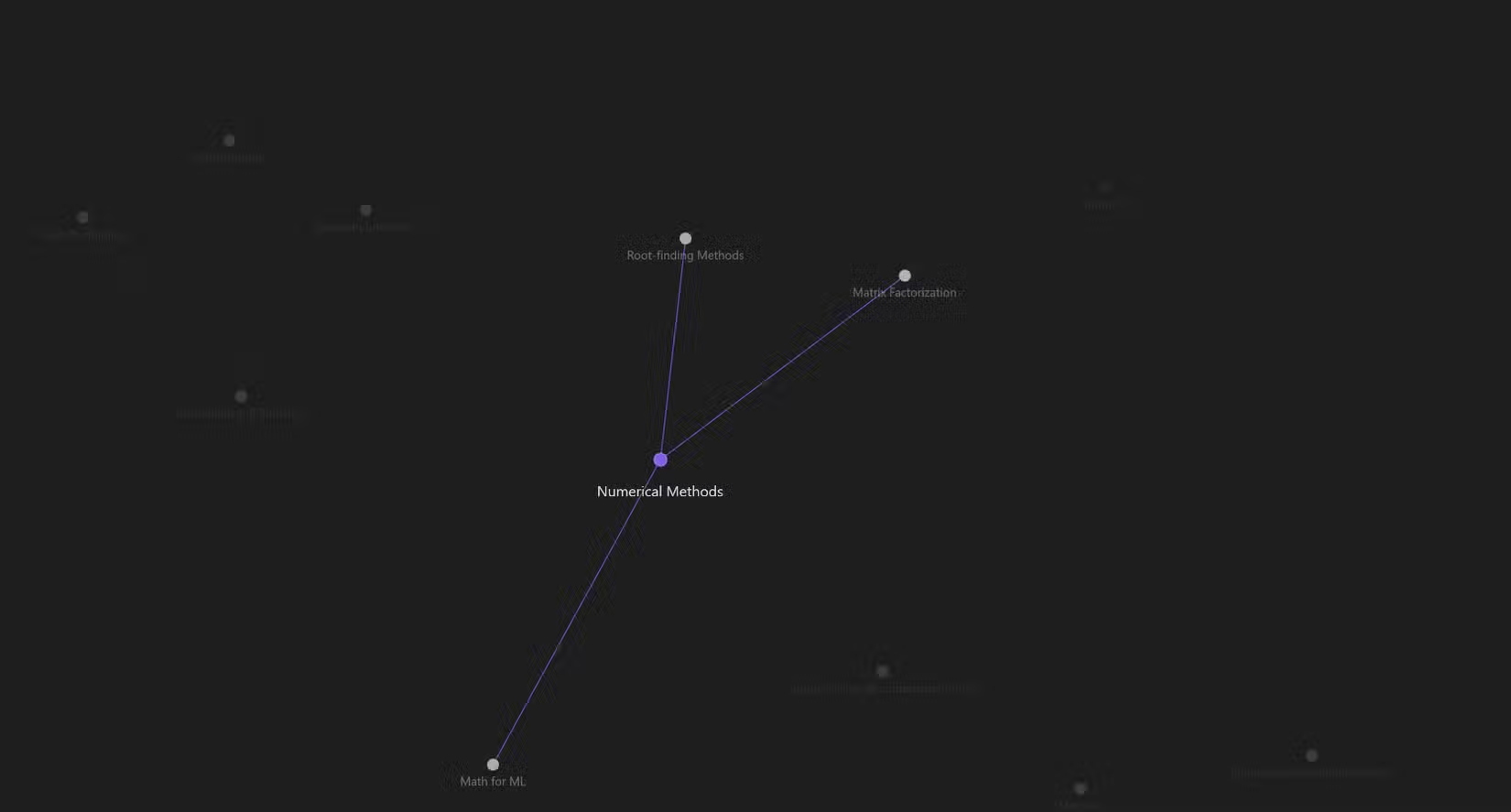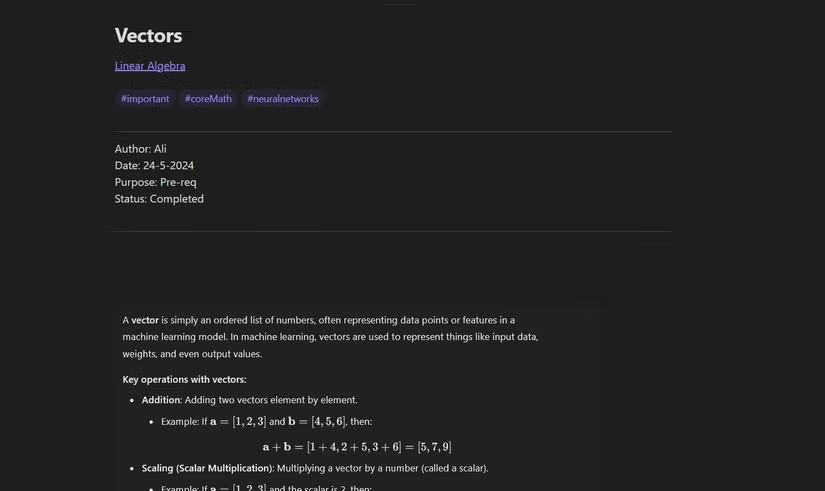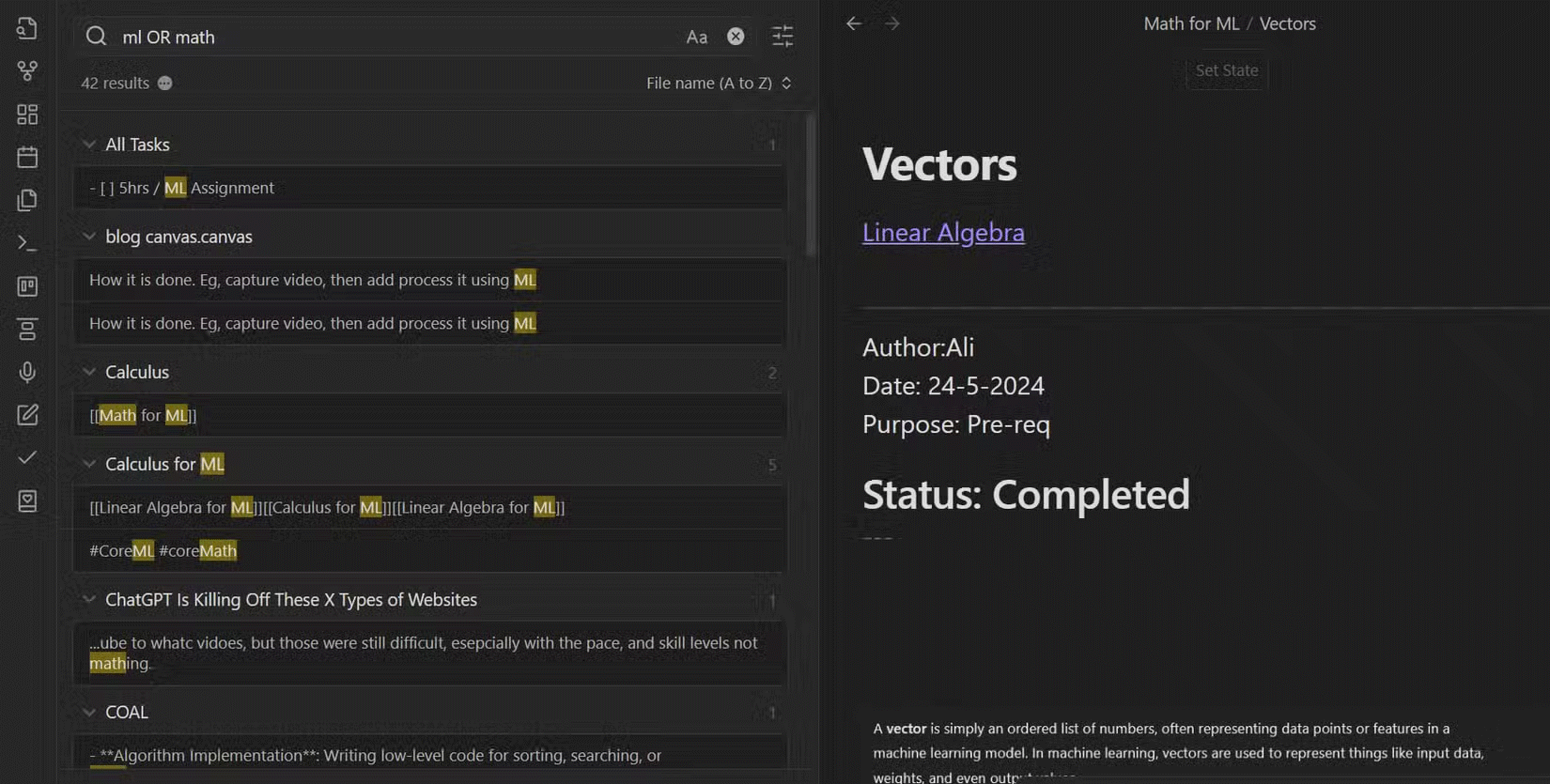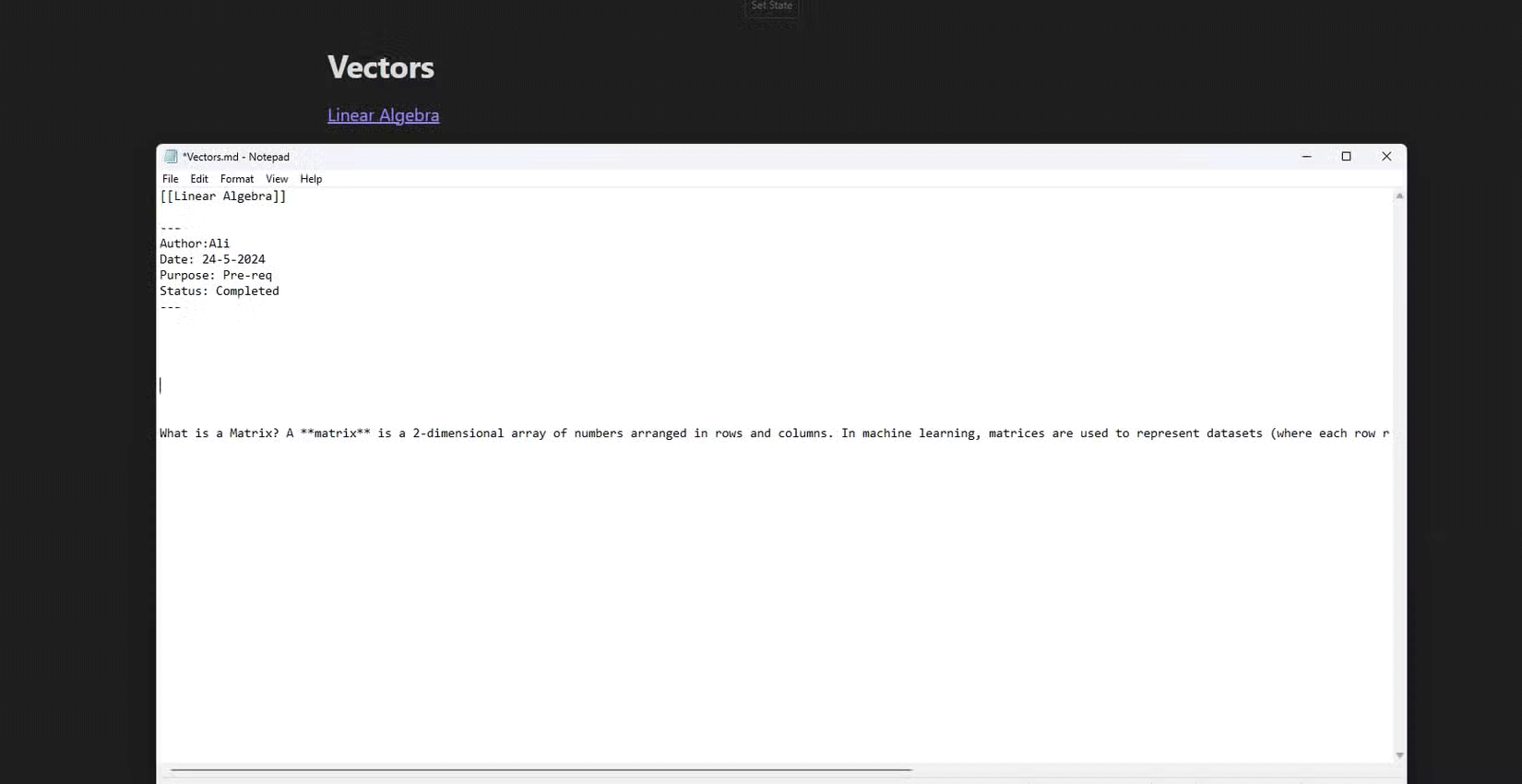6 Reasons Obsidian is Used for In-Depth Research Projects
Research projects can get messy quickly, so having the right tool is essential – one that seamlessly connects your thoughts and ideas while remaining easy to use. This is why Obsidian is such a favorite.
1. Two-way note linking
Research projects aren't just about gathering information; they're about creating a web of information that combines to form a comprehensive repository of meaningful insights. To achieve this, Obsidian has a note-linking feature where you can connect one note to another.
Conversely, if you take notes on a linear system like Microsoft Word, where there is no logical connection between notes, you will have to deal with endless scrolling up and down to find information.

On Obsidian, things are different. Each note represents a single idea or concept, and you can link them together. This method of note-taking allows you to quickly review and see where you started and where you need to go, which is important for avoiding getting lost in your research.
This way of taking notes also fits with the way our brains work. We don't store information as one long document, but rather we create nodes, link them together, switch between related concepts, and associate information.
Note : Linking notes is very useful when writing research papers, as you can use it for citations and references. By keeping notes for reference, you can link ideas to corresponding sources on the go.
2. Chart view to visualize notes
The graph view in Obsidian is a feature that lets you see the connections you make when linking notes. The view displays a grid of nodes, with each node representing a note and links showing how they connect to each other, helping you find the ground and grasp things quickly.

You can zoom in and out, move around, view cards, or even adjust the appearance of the chart. You can explore templates or even find new links and relationships between notes.
Another benefit of the chart view is that you tend to forget the notes you make on Obsidian over time. However, spending just 10 minutes in the chart view can easily help you recall and summarize your notes, which is important for not getting lost in deep research.
3. Tagging and Metadata
When taking notes for research purposes, we tend to save a lot of information for different purposes. Some may be useful for the current paper or project, while others are saved with the idea that they may be useful later. This is where Obsidian's tagging and metadata come in handy.

Tags are simply keywords or phrases that can be used to categorize notes, and creating a tag is simple — just use '#' followed by a keyword. With this feature, you can categorize notes by topic, purpose, etc. Metadata goes further. This is a way to add fields to the top of your notes to provide additional information, such as completion status, date, author, or priority.
Tip : Adding tags and metadata not only improves note organization, but also makes searching and filtering faster and more efficient.
4. Powerful Search
Many people rarely use the folder view in Obsidian because its search feature is far superior for finding notes. It goes beyond basic text searches, allowing you to filter by tags, metadata, or even use Boolean operators (AND, OR, NOT) to refine your results. Plus, you can save your search configurations for future use.

5. Plugins and Customization
While Obsidian comes with a ton of built-in extensions, that's not all. You have thousands of community plugins that can customize Obsidian, from its look to its functionality. If you want a specific feature that makes researching easier, chances are there's a plugin for that.
For example, if you want to manage tasks using a board view, you can install a Kanban board plugin that lets you create cards and organize projects. Another extension can automatically create outlines for your notes or add a timer inside notes to track time spent on notes. And much more.
Finally, if you get bored with Obsidian's default interface, there's a vast library of themes to choose from that can completely transform Obsidian. This kind of customization space and flexibility makes working with Obsidian a lot more enjoyable.
6. Prioritize offline and privacy
Obsidian is an app that makes it easy to move around if that's something you decide to do in the future. Obsidian is offline-first and saves notes in Markdown format.
This means you can access your notes anytime, anywhere without an internet connection. And since notes are stored locally and privately, you own your data and are not dependent on third-party servers.

Note : Obsidian uses Markdown formatting, so you don't need any fancy apps to open your notes elsewhere.
Overall, Obsidian's flexibility and functionality make deep work a pleasure. You get an app that supports your brain and big projects, while giving you the freedom and powerful features to focus on what you love to do: Research.
You should read it
- How to write mathematical notation in Obsidian
- Is Obsidian note-taking app worth your time?
- How to Use Share Note: Free Plugin Turns Obsidian Notes Into Shareable Web Pages
- How to Create a Hell Gate in Minecraft
- 7 best Markdown editors for Android and iPhone
- 'Standalone' PC gamers have four video cards that have been rare for 20 years to play Half-Life
- The largest depth in the ocean detected living organisms
- How to add depth control to iPhone camera images
May be interested
- Qualcomm adds the same depth sensor Kinect to all high-end phones next year
 apple's new arkit augmented reality technology has made the world of smart phones pay attention, even though it's just sharing ideas, not real applications.
apple's new arkit augmented reality technology has made the world of smart phones pay attention, even though it's just sharing ideas, not real applications. - Detect security holes in both AMD's Ryzen and Threadripper chips
 most noteworthy is that intel is a partial sponsor of the security vulnerability research project on amd chips.
most noteworthy is that intel is a partial sponsor of the security vulnerability research project on amd chips. - 8 best projects eliminated by Google
 behind all of google's successes lies a graveyard full of failed projects. from google podcasts to android things, these are the best projects google has dropped.
behind all of google's successes lies a graveyard full of failed projects. from google podcasts to android things, these are the best projects google has dropped. - Invitation to COLOR Projects 4, a $ 99 professional image processing software, is free
 color projects 4 is an image processing software with many features, a professional color filter for all image processing needs for both amateurs and photographers. what is special about color projects 4 is that you can use it as a stand-alone program or in parallel as a photoshop or lightroom plug-in.
color projects 4 is an image processing software with many features, a professional color filter for all image processing needs for both amateurs and photographers. what is special about color projects 4 is that you can use it as a stand-alone program or in parallel as a photoshop or lightroom plug-in. - How to Create a Neopoprealist Art Work
 neopoprealism is a style of art that aims to combine the simplicity of modern pop art with the philosophical depth of realism. this style of art does have its 'rules,' but it is largely focused on creating artwork that is unique to the...
neopoprealism is a style of art that aims to combine the simplicity of modern pop art with the philosophical depth of realism. this style of art does have its 'rules,' but it is largely focused on creating artwork that is unique to the... - Open source Python projects for beginners
 where are the best open source python projects that can be learned? this is probably one of the most frequently asked questions that the 'newbie' feet wet to step into the world of python questions and learn.
where are the best open source python projects that can be learned? this is probably one of the most frequently asked questions that the 'newbie' feet wet to step into the world of python questions and learn. - 8 major projects have been canceled by Apple
 the apple car is one of the most prominent projects that apple was unable to complete, but it is not the only one. today's article will help you review your memories and review apple's canceled projects as well as other products that are no longer on the market.
the apple car is one of the most prominent projects that apple was unable to complete, but it is not the only one. today's article will help you review your memories and review apple's canceled projects as well as other products that are no longer on the market. - How to Make Subjects Stand Out and Create Depth in Smartphone Photos
 while it's more difficult to create a shallow depth of field when using a smartphone, it's still possible through a combination of shooting and editing.
while it's more difficult to create a shallow depth of field when using a smartphone, it's still possible through a combination of shooting and editing. - How to Research a Topic
 with so much information potentially available at your fingertips, having a research assignment can be daunting. however, if you approach your research methodically, you'll be able to answer any research question in a thoughtful and...
with so much information potentially available at your fingertips, having a research assignment can be daunting. however, if you approach your research methodically, you'll be able to answer any research question in a thoughtful and... - 11 reasons not to buy iPad 2
 this madness must have its reasons, and those reasons also have its reasons. in this article, we will learn about completely new reasons why you should not buy ipad 2
this madness must have its reasons, and those reasons also have its reasons. in this article, we will learn about completely new reasons why you should not buy ipad 2














 How to set YouTube to auto-rotate on Samsung phones
How to set YouTube to auto-rotate on Samsung phones How to Get Your Child to Share What Happened During the Day
How to Get Your Child to Share What Happened During the Day How to Use Flick Metrix: The Review Aggregation Site That Helps You Find New Movies to Watch
How to Use Flick Metrix: The Review Aggregation Site That Helps You Find New Movies to Watch Beware of These 5 YouTube Comment Scams!
Beware of These 5 YouTube Comment Scams! Why you shouldn't 'warm up' your car engine in cold weather?
Why you shouldn't 'warm up' your car engine in cold weather? Why Checkbox is an underutilized Excel feature?
Why Checkbox is an underutilized Excel feature?